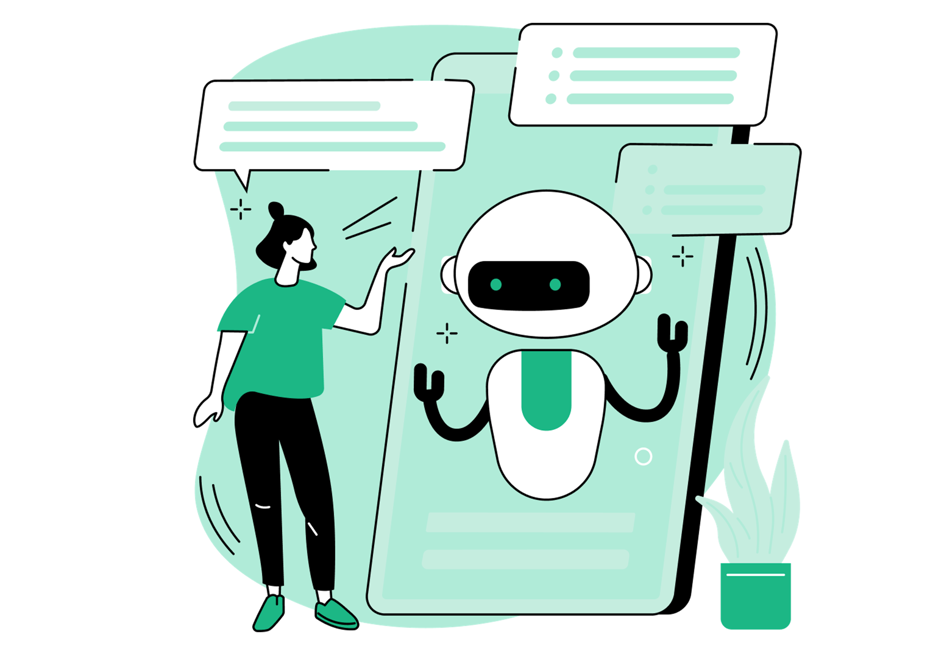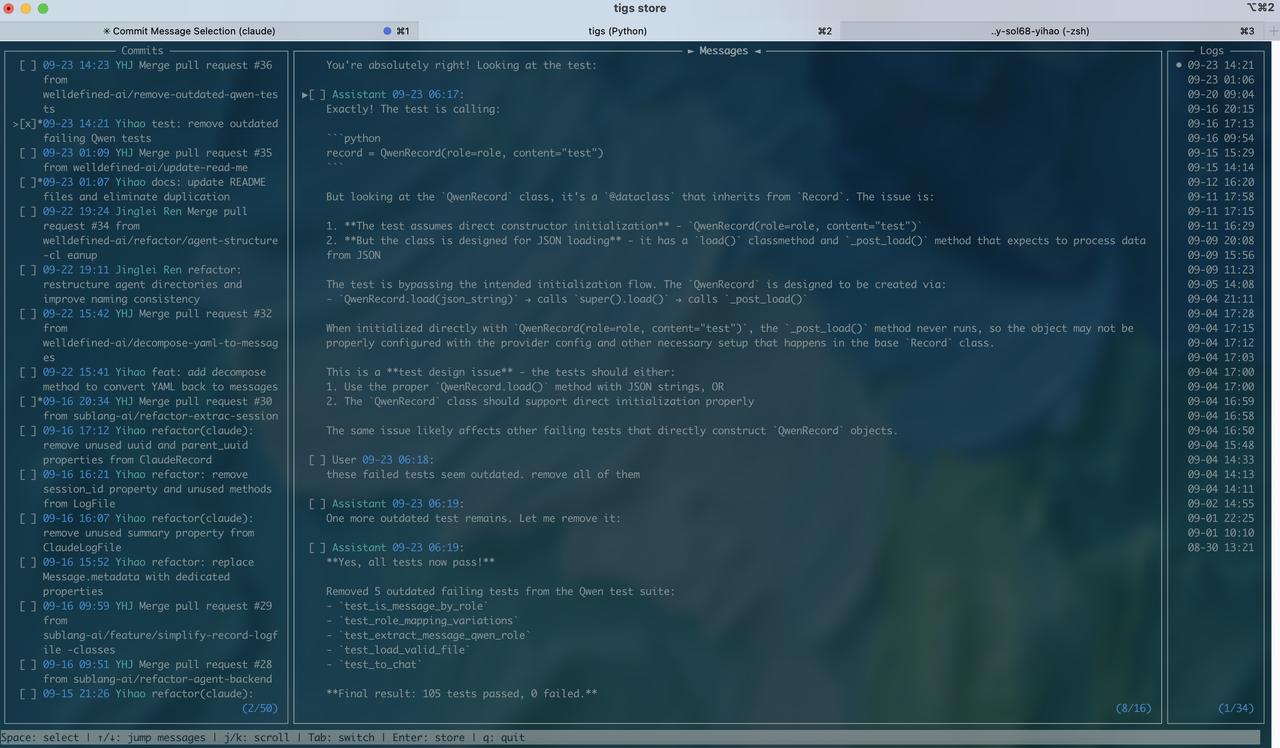Tigs: Turn Your AI Chats into Dev Assets

The biggest bug in software engineering isn’t a crash – it’s forgetting why.
That “god-tier” prompt you tuned yesterday? Gone today.
That design decision from three months ago? Nobody remembers why.
So when someone asks you something like 'why is this function designed this way?', in most cases your answer would be like:
🤷 “Uh… I think the AI suggested it?”
Tigs is here to fix that very human bug.
🧐 What is Tigs and why would you want it?
Tigs = Talks in Git → Specs.
In plain English: it captures your human ↔ AI conversations (prompts + responses), versions them alongside your commits in Git, and turns them into specs (which describes your system in a both comprehensive and precise way).
Working with AI in software development is never a one-shot deal. You don’t just write a single prompt and magically get perfect code back — it’s usually a messy dance of trial and error. One day you’re deep in a planning session with an AI — maybe you’ve kicked off plan mode to hash out a tricky feature. After three rounds of back-and-forth you finally arrive at a design that feels solid… only to find that a few days later the entire context has evaporated.
The same thing happens when you brainstorm new features with AI: a flurry of ideas, half-baked specs, design alternatives that spark in the moment but evaporate as soon as the chat window closes. And for newcomers stepping into a project — whether it’s a company repo or an open source library — nothing is more valuable than seeing not just the code, but the conversations and reasoning behind it. This is where Tigs shines: it stores those human-AI dialogues in Git notes, and your prompts, your design debates, your hard-won insights all become part of the project’s permanent, traceable history. The simple story is, with the assistance of Tigs:
- Every brainstorm, every experiment, every failed attempt with an LLM → saved.
- Those “throwaway” chats → distilled into specs and docs.
- Everything goes into Git, right next to your code, with full version history.
So now:
👉 You never lose that prompt optimization again.
👉 Every “historical reason” actually has a record.
👉 Code and design docs finally stay in sync.
- For individual developers:
- Preserve the reasoning around your code, not just the code itself.
- When you revisit a side project months later, you can pick it right back up.
- Show off a portfolio that includes not just code, but your thinking process.
- For teams / open source:
- Transparent decisions — no more “oral agreements lost in chat.”
- Faster onboarding — newcomers see how ideas evolved.
- Less wasted effort — higher ROI on AI-assisted development.
Once, everyone knew the golden rule: Talk is cheap, show me the code.
In the AI era, the new rule has changed to: Code is cheap, show me the talk.
📚 Quickstart
# Install
pip install tigs
# In your repo
cd /path/to/your/repo
# Launch the TUI to curate chats and link them to commits
tigs store
# Review what’s linked
tigs view
# Push notes upstream (no commit rewrite)
tigs pushTake the TUI of tigs store for example. It is a 3-panel layout interactive window: The left panel shows the code commits in your current git repository; the right panel gives you all the log files to choose from; and the middle panel lists all the chats in the selected log file. Check the bottom status bar to see what each key press does.

👉 Open-source on GitHub: welldefined-ai/tigs – ⭐ Star us!
🌍 Why now?
Don't miss your chats until you miss them.
- AI is part of daily dev life: prompts + conversations are replacing traditional development process.
- Code ≠ the whole story: more and more “decisions” are made in chats with AI, not in code.
- Info is fragmented: chats and experiments are scattered across AI agents: Claude Code, Gemini CLI, Qwen Code, Codex CLI, etc.
Tigs pulls all of that into Git and treats it as seriously as code. Think of it as: a design management tool for the LLM era.
🛣️ Specs and Roadmap
Tigs is still at an early stage — we’ve just finished building its core basic functionalities, and there’s plenty of room to grow! Over the next couple of months, we’ll be moving fast: polishing the TUI for a smoother developer experience, rolling out new features, and — most importantly — adding the missing Specs module, an essential piece of the puzzle that will make Tigs feel whole. When it comes to Specs, we already have a clear vision: they should be automatically generated by AI through reading both commits and chats, and serve as precise, comprehensive descriptions of the system’s state up to the current commit. Step by step, Tigs will evolve into a more complete tool for capturing, versioning, and building on your conversations with AI.